Refer to the exhibit.
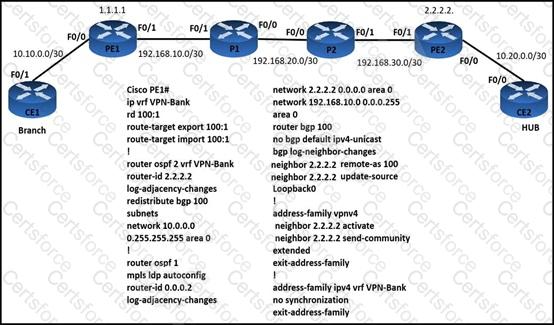
Customer traffic from the branch site to the hub is experiencing packet drops. The engineer verified that:
Customer traffic from the hub is able to reach the branch site.
The connection between PE1 and PE2 is working normally.
Routers P1 and P2 are able to ping devices on the hub site.
Which action resolves the issue?
The engineering team at ISP_1 must improve network stability time and minimize the impact of routing instabilities from other domains to unicast transit services in the backbone R1 is part of an OSPF- enabled network, and acts as an ASBR connected via interface GiO/1 to the external domain The OSPF exponential backoff algorithm RFC 3623 with helper mode is already implemented on R1 Which additional configuration must the ISP_1 team apply to suppress routing instability for 3 minutes'?
Refer to the exhibit.
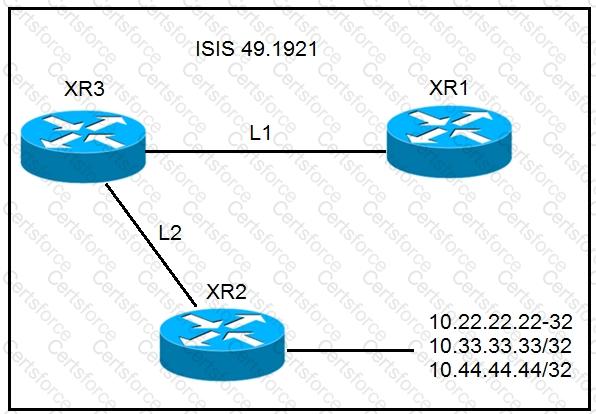
A network operator must stop 10.33.33.33/32 from being redistributed into Level 1 router
XR1. Which configuration meets this need?


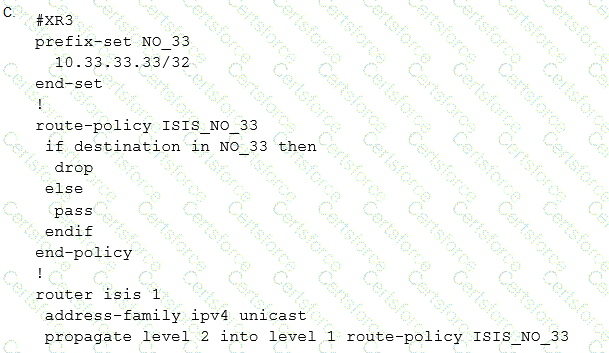
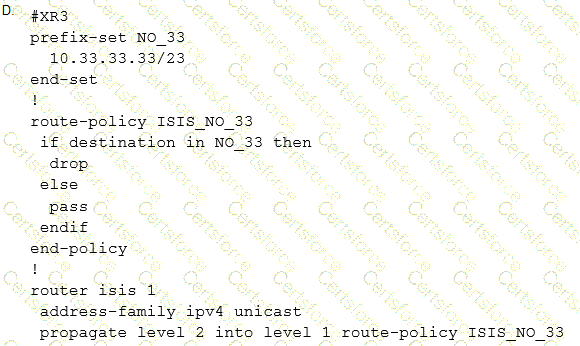
You have configured MSDP peering between two autonomous systems that pass traffic between two sites, but the peering has failed to come up.
Which task do you perform to begin troubleshooting the problem?
Refer to the exhibit.
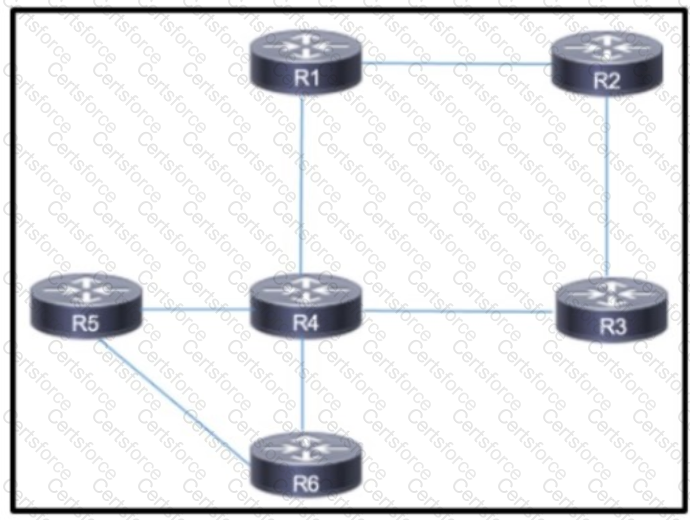
Early in the growth cycle of a small enterprise the network-engineering team implemented segment routing to support automation of the IPv4 network As the network grew organically more devices were added and the company migrated to SRv6 The company is now planning to significantly expand the number of hosts connected to R2 and R6 which will require further path manipulation Which action must the team take to customize the route that traffic takes between endpoints in the network?
Refer to the exhibit.

After troubleshooting BGP traffic steering issue, which action did the network operator
take to achieve the correct effect of this configuration?
Drag and drop the features from the left into the order of operations for SRv6 SSH field creation and forwarding on the right.
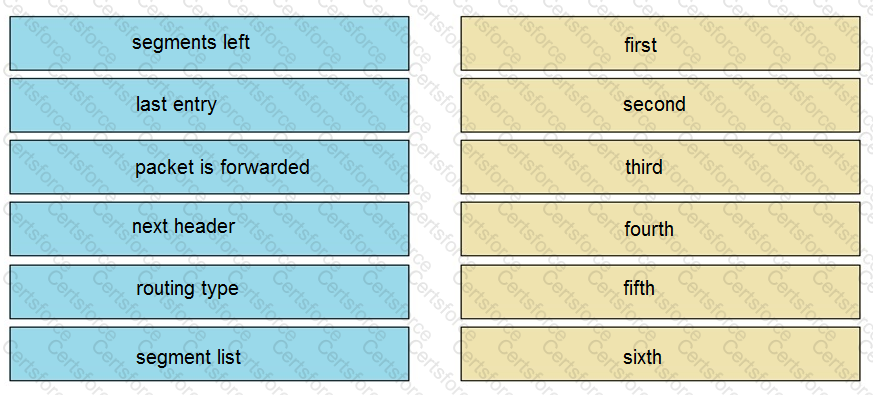
Level 3 switch SW1 is part of an EIGRP enabled network located at the edge of an area. Cisco Express Forwarding and SSO are enabled on the router. A network engineer must minimize the downtime of data-transmit services in the network. HSRP group 2 has already been configured with standby preempt delay minimum 2 and standby timers 140. Which additional action must the engineer take on SW1 to suppress routing flaps for 2 minutes?
Which attribute is used to instruct the router that packets must be processed by an ASA that is associated with the segment?
Refer to the exhibit.

Why is neighbor 10.1.5.5 stuck in “2WAY” state?